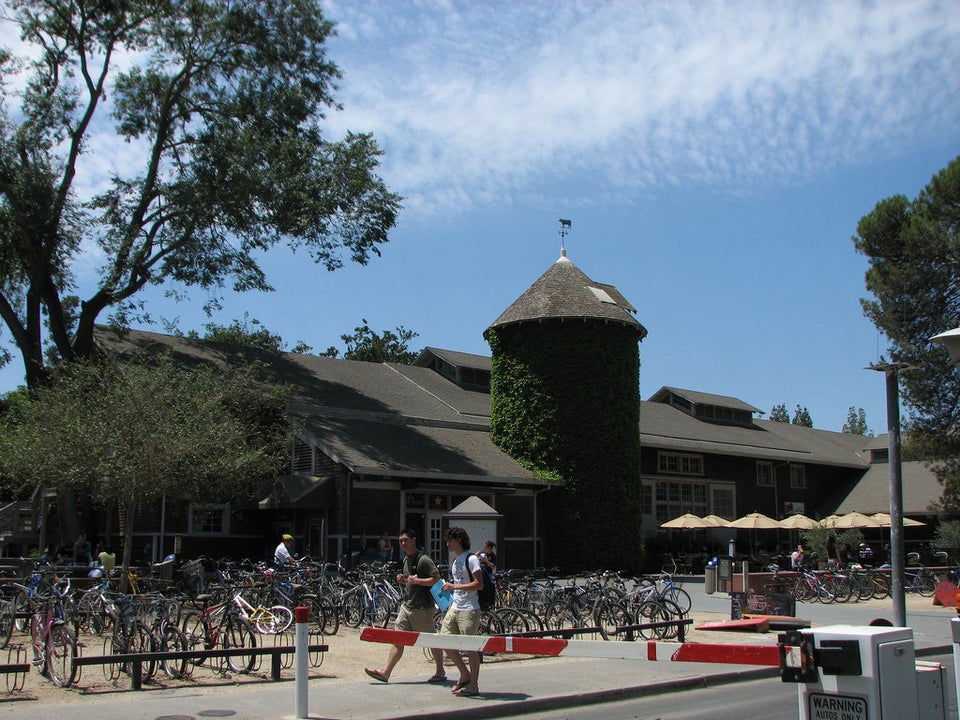
This piece comes to us courtesy of U.S. News & World Report.
Congress is still squabbling over student loan interest rates, but proposals from students and lawmakers could make the argument moot by tossing student loans out the window altogether.
Legislators in Oregon unanimously approved the creation of a pilot program called Pay Forward, Pay Back earlier this month. Born in an economics class at Portland State University, the initiative flips college financing on its head, doing away with upfront payment of tuition and fees.
Instead, students agree to a payroll deduction of 1.5 to 3 percent of their income for 20 years.
The Oregon plan is one of several that propose blowing up the current financial aid system to address a cycle of funding cuts, tuition hikes and rising student debt.
[Learn how to use crowd funding to pay for college.]
That pattern prompted a group of students at the University of California-Riverside to develop their own college funding model in 2011.
Faced with a nearly $1 billion cut in state funding, the University of California school system increased tuition nearly 18 percent in less than one year.
"We only have a handful of options open to us, and all are horrible options," Bonnie Reiss, a member of the university's board of regents, said in July 2011 after voting for a second round of tuition increases. The UC system had already implemented layoffs, eliminated academic programs and increased class sizes, but doing so further would compromise the academic integrity of the universities, the regents said.
So Chris LoCascio and the editorial board at UC—Riverside's student newspaper came up with their own option: Fix UC, a student investment plan similar to the one in Oregon.
"Everyone was pointing at one another, not taking responsibility, and had no real new ideas about how to solve the problem," recalls LoCascio, an English and political science double major now entering his senior year.
With the Fix UC plan graduates would pay no upfront tuition, but commit to pay a fixed 5 percent of their income for 20 years after they leave the institution.
"There are no interest rates, no penalty, no bill that hits your door six months after graduation," he says.
[Discover 10 ways to minimize student loan debt.]
If graduates are unemployed, they pay nothing. If they make $120,000 per year, $6,000 goes directly back to the University of California. This not only eliminates sticker shock and student loan worries, but would free the university system from its dependence on rapidly dwindling state funding, LoCascio says.
LoCascio and the editorial board, along with a handful of students from other universities in the UC system, spent nine months developing this plan before presenting it to the board of regents in January 2012.
Fix UC's proposal garnered positive responses from university officials and congressmen, but fellow students were initially skeptical, he says.
Much of the skepticism wore off as students graduated and the reality of their student loans hit them, LoCascio says.
"It's definitely a wake-up call," he says. "When you're a student, it's just a number on your screen, not a bill on your doorstep."
Despite support from students, school officials and lawmakers, Fix UC can't get off the ground without federal assistance, particularly from the Internal Revenue Service. The agency's infrastructure is crucial to automatically collecting the 5 percent from graduates' paychecks.
Even if that comes in the next year or two, LoCascio estimates it would take another decade for the entire school system to transition to this model. A handful of California students are already benefiting from a Fix UC-style funding model, though, thanks to a nonprofit organization called 13th Avenue.
The group funded four students last year, and will bump that number up to 11 for the 2013-2014 school year. All of the students graduated from Allen Hancock College, a two-year institution in central California that 13th Avenue partners with, and many are first-generation college students.
[Find advice and tips to maximize your college savings plan.]
Each student funded by 13th Avenue signs a "human capital contract," agreeing to pay 6 percent of their future earnings back to the organization. That money will in turn finance a new set of students.
This approach has garnered its share of criticism, says CEO Bob Whelan.
"We've run into comments like, 'Oh, this is indentured servitude, to have a student commit a certain percentage of future income,'" he says. "It's more like venture capital. Except we're not investing in companies, we're investing in students."
Even students the organization serves wondered what the catch was, says Eddie Triste, 32, a veteran and senior at Sacramento State University.
"At first we're all hesitant of like, 'What do you mean you want to invest in us?'" says Triste, who was raised in a Central Valley community populated by field laborers. "Where I grew up, we really don't trust people a lot."
Triste, a sociology major who plans to pursue a Ph.D. and eventually run his own outreach organization, would have continued his education without the help of 13th Avenue, but money would have been a constant point of stress, he says.
"I've been working for most of my life," says Triste, whose parents never graduated from high school. "There's always been that stress of trying to balance out going to school, paying for school, paying for rent, helping my family out. Those things, they always collided with each other."
Both Whelan and LoCascio present their models as solutions to the so-called student debt crisis, but others have their doubts.
Eyra Perez, executive director of the San Antonio Education Partnership, points out that these plans don't tackle the issue of financial illiteracy, which even Whelan cites as one of the biggest challenges his organization faces.
Financial aid reformers also need to take a multipronged approach to fixing the system, she says, and consider the needs of a variety of communities, such as low-income and minority students.
"I think it's great that we're looking at it and thinking outside of the box," says Perez. "But what works in Oregon won't necessarily work in Texas."
Trying to fund your education? Get tips and more in the U.S. News Paying for College center.
